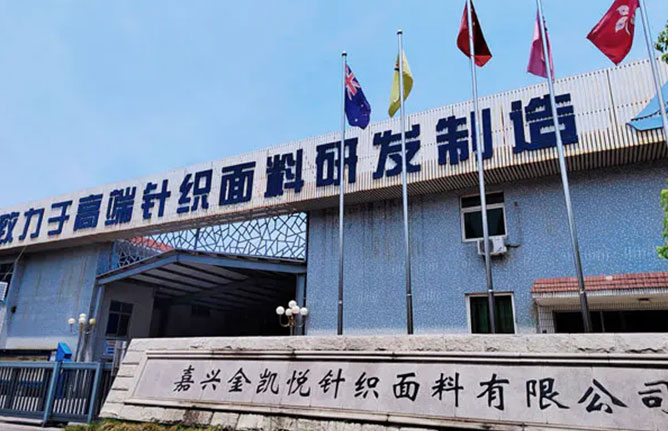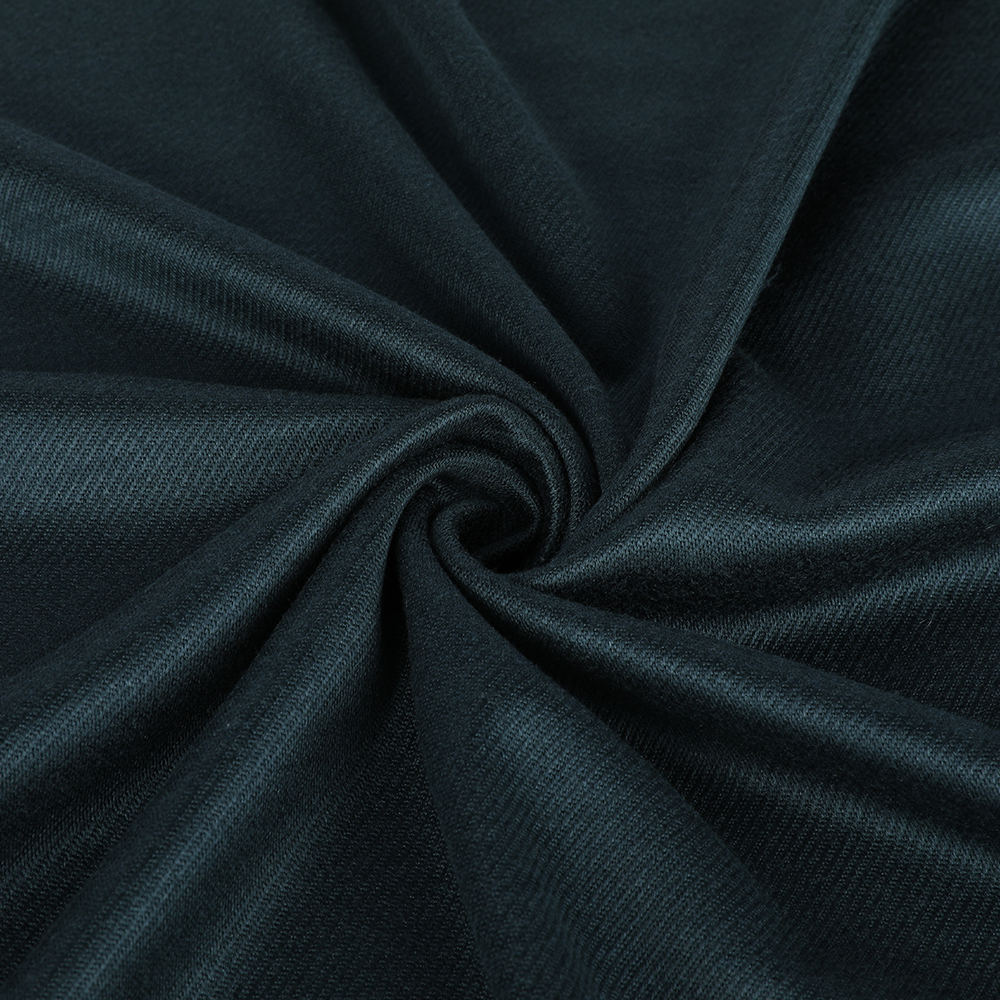Почему вязаные высококлассные ткани женской одежды становятся основным элементом в дизайне женской одежды высокого класса В высококлассном дизайне женской одежды, Вязаные высококлассные ...
Читать далееобычай Шелковые кашемировые ткани
Шелковая кашемирная ткань сочетает в себе двойные преимущества шелка и кашемира. Шелк славится своим мягким блеском, поглощением влаги и воздухопроницаемостью, в то время как кашемир обеспечивает непревзойденное тепло и мягкое прикосновение. Благодаря тщательному отбору и специальной обработке, шелковая кашемирная ткань показывает равномерную и тонкую текстуру и теплый цвет. У него есть как блеск шелка, так и тепло кашемира. Он имеет шелковистый штрих и имеет кожу и не обрядает. Он обладает хорошей эластичностью и свойствами восстановления, нелегко деформировать и об этом легко заботиться. Он подходит для создания высококлассной моды, платков, шарфов и предметов домашнего обихода. Шелковая кашемирная ткань не только отражает необычный вкус и благородный статус владельца, но и является символом стремления к качеству жизни. В качестве демонстрации искусства одежды каждый прикосновение шелковой кашемирной ткани передает замечательное слияние природы и роскоши. Это модель как практической, так и эстетической ценности в области текстиля.

-
-
В обширном и запутанном мире текстиля одна категория выделяется своей непревзойденной способностью объединять комфорт с универсальностью: вязаные ткани. Эти материалы, сформированные посредством ...
Читать далее -
Как комфортные и мягкие шерстяные ткани могут стать секретным оружием вашего осень-зимого гардероба?
Поскольку долгие осенние и зимние сезоны вступают в голову, стремление людей к одежде выходит за рамки основной потребности в тепла. Вместо этого они ищут идеального баланса между функциональнос...
Читать далее -
В обширном мире текстиля шерсть давно считается символом роскоши и комфорта, лелеясь своим исключительным теплом и мягким прикосновением. Тем не менее, его деликатная природа сдерживает много - уск...
Читать далее -
В области текстильных материалов натуральные волокна всегда занимали незаменимое и важное положение. В качестве высококачественного материала, который сочетает в себе функциональность и комфорт, см...
Читать далее
What kind of weaving process is used to produce silk cashmere fabrics? How does this process affect the texture and appearance of the fabric?
The weaving process of silk cashmere fabric is a complex and delicate process, which combines the essence of traditional weaving technology with modern technology. This process can be roughly divided into several key links, such as raw material preparation, weaving, and post-processing.
The selection of raw materials is the first and most important step in the production of silk cashmere fabrics. Silk is known for its soft luster, good moisture absorption and breathability, and natural noble temperament, while cashmere is known for its unparalleled warmth and soft touch. Jiaxing Jinkaiyue Knitted Fabric Co., Ltd. implements strict control at every stage of raw material procurement to ensure the traceability of raw materials, and uses advanced technology for data control to ensure the quality of raw materials.
In the raw material preparation stage, both silk and cashmere need to be carefully selected and pre-treated. Silk raw materials need to go through processes such as degumming and refining to remove sericin and other impurities and improve the gloss and softness of the silk thread. Cashmere raw materials need to go through processes such as combing and impurity removal to ensure the purity and uniformity of cashmere fibers.
Weaving is the core link in the production of silk cashmere fabrics. Jiaxing Jinkaiyue Knitted Fabric Co., Ltd. has advanced weaving equipment and technology, and can customize fabrics according to customer needs. During the weaving process, silk and cashmere fibers are cleverly interwoven to form a unique fabric structure.
In order to obtain the best fabric effect, the weaving process usually uses precision air jet looms or rapier looms. These looms have a high level of automation and intelligence, and can accurately control the interweaving points and tension of the yarns to ensure the uniformity and stability of the fabric. In addition, the feeding speed and tension of the yarns need to be strictly controlled during the weaving process to avoid defects or defects in the fabric.
In the selection of weaving technology, according to the design requirements and uses of the fabric, different weaving methods such as plain, twill, and satin can be used. The fabric structure of plain weave is tight and the texture is flat; the fabric of twill weave has better elasticity and gloss; the fabric of satin weave is known for its delicate gloss and soft feel.
After weaving, the silk cashmere fabric needs to go through a series of post-processing processes to further improve its quality and appearance. These post-processing processes include dyeing, finishing, shaping, etc.
In the dyeing process, environmentally friendly dyes and advanced dyeing technology are used to ensure that the fabric has bright, uniform and long-lasting color. The finishing process improves the softness, wrinkle resistance and wear resistance of the fabric through the treatment of chemicals such as softeners and anti-wrinkle agents. The shaping process is to keep the fabric in a stable shape and size through high-temperature ironing and shaping equipment.
The weaving process has a profound impact on the texture and appearance of silk cashmere fabrics. The following will be analyzed in detail from the aspects of gloss, softness, elasticity, stability, pattern and texture of the fabric.
Silk is known for its soft and natural luster, and the weaving process has an important influence on the gloss of silk cashmere fabrics. In the weaving process, the interlacing points and tension control of the yarn directly affect the flatness and light reflection effect of the fabric surface. The use of precise weaving equipment and technology can ensure that the yarn is evenly interlaced and the tension is moderate, so that the fabric presents a uniform and delicate luster. In addition, the dyeing and finishing treatments in the post-processing process can further enhance the gloss of the fabric, making it more beautiful and attractive.
Cashmere is famous for its incomparable soft touch, and the softness of silk cashmere fabric is directly affected by the weaving process. In the weaving process, the selection of yarns, interweaving methods and tension control will affect the softness of the fabric. The use of yarns with moderate fineness and good uniformity, as well as reasonable interweaving methods and tension control can make the fabric softer and more comfortable. In addition, the softener treatment in the post-processing process can further improve the softness of the fabric, making it feel silky and smooth.
The elasticity and resilience of silk cashmere fabrics are also one of the important indicators to measure its quality. The weaving process has a significant impact on the elasticity and resilience of the fabric. In the weaving process, the interweaving density and tension control of the yarns are the key factors affecting the elasticity of the fabric. Reasonable interweaving density and tension control can make the fabric have good elasticity and resilience, and it is not easy to deform. In addition, the anti-wrinkle agent treatment in the post-processing process can further improve the wrinkle resistance and resilience of the fabric, making it more durable.
The stability of the fabric refers to its ability to maintain stable shape and size under various environments. The weaving process has an important influence on the stability of the fabric. In the weaving process, the use of advanced weaving equipment and technology can ensure that the yarns are evenly interwoven and have moderate tension, thereby improving the stability and dimensional accuracy of the fabric. In addition, the shaping treatment in the post-processing process can also further enhance the stability of the fabric, so that it can maintain a good shape and size in various environments.
The pattern and texture of silk cashmere fabric are an important part of its appearance beauty. The weaving process has a direct impact on the pattern and texture of the fabric. In the weaving process, by changing the color, thickness and interweaving method of the yarn, a variety of patterns and texture effects can be created. Jiaxing Jinkaiyue Knitted Fabric Co., Ltd. has a professional R&D team that can customize fabrics according to customer needs, including types, colors, patterns, etc., to meet the personalized needs of customers. In addition, the printing and embossing treatments in the post-processing process can also further enhance the pattern and texture effects of the fabric, making it more unique and beautiful.
Наши производственные возможности дополняются мощным потенциалом в области НИОКР, что позволяет нам выполнять большое количество проектов с более высоким качеством и в более короткие сроки.
Производственные возможности
Мощные производственные возможности повышают вашу конкурентоспособность
-

Чтобы гарантировать лучшее качество, компания Jin Hyatt инвестировала в передовое оборудование из Италии, Германии, Швейцарии, Японии и Тайваня.
-

Компания в основном занимается различными материалами, включая шелк тутового шелкопряда, аммиачный хлопок, шерсть, кашемир, ткани для занятий спортом на открытом воздухе и различные смеси волокон.
-

Компания эффективно управляет хранением сырья и готовой продукции, интегрирует весь производственный процесс и повышает общую эффективность.
-

Компания нацелена на элитный рынок, производя высококачественные трикотажные полотна, и выделяет 20% своих трудовых ресурсов на исследования и разработки с целью повышения ценности и конкурентоспособности продукции.

 中文简体
中文简体







